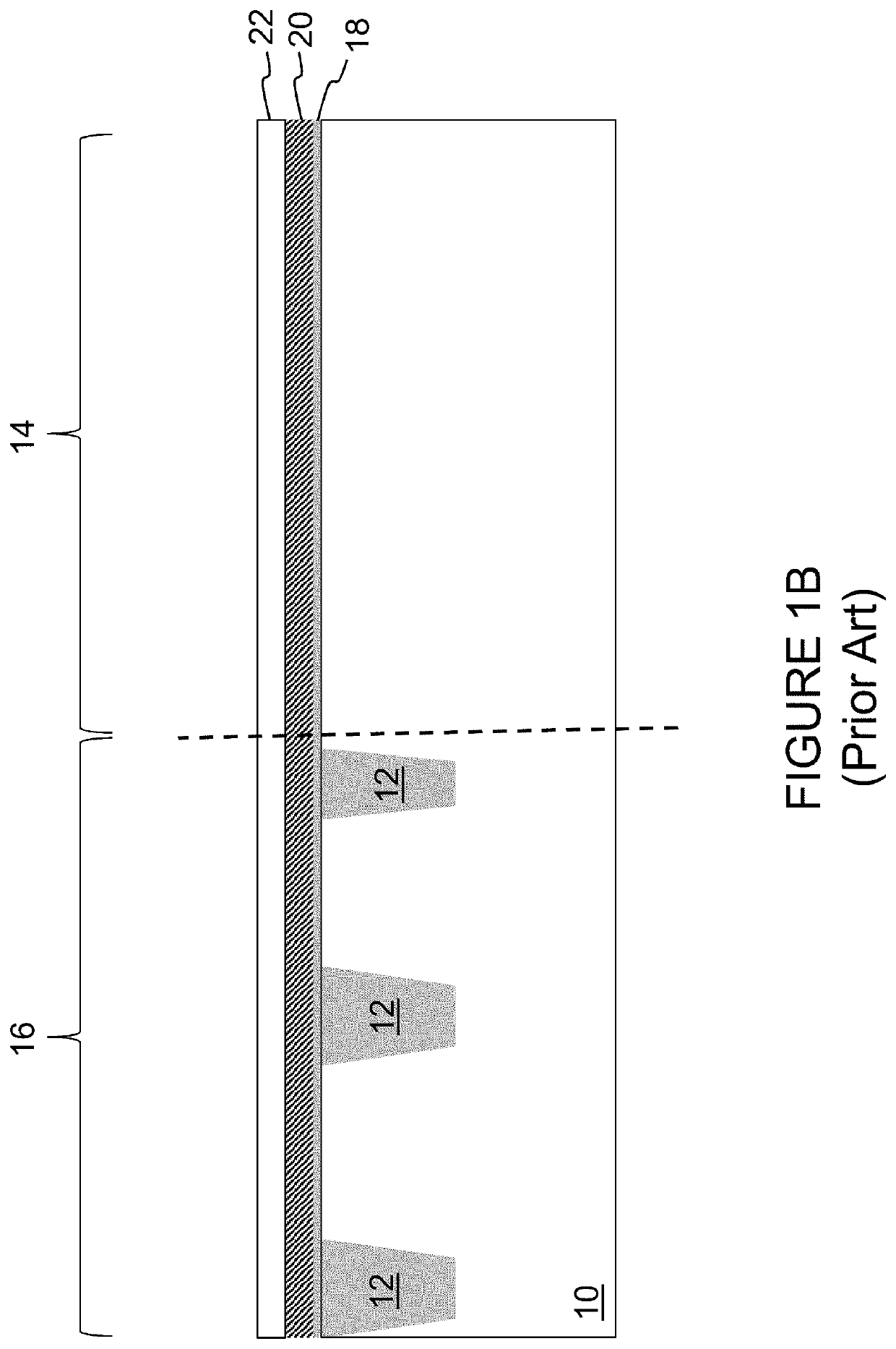Method of forming split gate memory cells with thinned tunnel oxide
- Summary
- Abstract
- Description
- Claims
- Application Information
AI Technical Summary
Benefits of technology
Problems solved by technology
Method used
Image
Examples
Embodiment Construction
[0015]The present invention is a technique of forming memory cells and logic devices on a common substrate, where the oxide layer used as a tunnel oxide and word line oxide for the memory cells and the gate oxide for the logic devices is thinned in the memory cell region as it passes between the floating gate and the control gate.
[0016]FIGS. 2A-2F disclose the steps of the method of the present invention. The process begins using the same steps described above with respect to FIGS. 1A-1D. Starting with the structure in FIG. 1D, an oxide etch is used to remove the exposed portions of oxide layer 18 (i.e., those portions not under floating gate 20a. An oxide layer 26 is then formed over the structure either by deposition (which also thickens oxide areas 24) and / or by oxidation (which has no effect on oxide areas 24) as shown in FIG. 2A. Oxide layer 26 can be considered to have three portions: a first portion 26a that extends along the logic region of the substrate upper surface, a sec...
PUM
 Login to View More
Login to View More Abstract
Description
Claims
Application Information
 Login to View More
Login to View More - R&D Engineer
- R&D Manager
- IP Professional
- Industry Leading Data Capabilities
- Powerful AI technology
- Patent DNA Extraction
Browse by: Latest US Patents, China's latest patents, Technical Efficacy Thesaurus, Application Domain, Technology Topic, Popular Technical Reports.
© 2024 PatSnap. All rights reserved.Legal|Privacy policy|Modern Slavery Act Transparency Statement|Sitemap|About US| Contact US: help@patsnap.com










